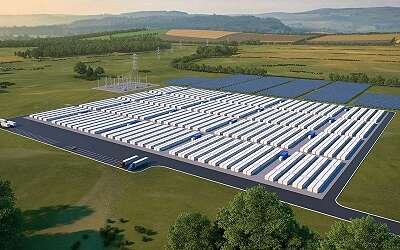Intermittent power technologies such as wind and solar need a source of baseline power for the times when they cannot operate. Nuclear power is one such technology, but the timescale for bringing such plants online has been stymied by regulatory burdens that result in long and costly construction schedules. This is changing, and newer technologies that promise improved safety and performance are now coming to be realized, but another arena where progress is being made is battery backup capability. also called long-duration energy storage (LDES).
An online query of Google's Gemini AI tool shows that Lithium-ion, sodium-ion, zinc-based and redox flow technologies are promising, but the emphasis is on automobile power, not necessarily the huge requirements of a grid backup. These technologies are expensive and have serious environmental issues.
One technology that looks promising to me is Form Energy's iron-air system. According to Gemini, " Form Energy's iron-air battery technology is progressing rapidly. Their pilot projects and planned deployments indicate significant industry interest and the potential to revolutionize long-duration grid storage solutions." Iron air batteries are not something Form Energy invented. The company is actually building off technology developed in Pittsburgh 50 years ago when Westinghouse was researching them for electric vehicles.
Form is the first to commercialize and scale the technology. (*) According to Form Energy CEO Mateo Jaramillo, Lithium-ion batteries, the current market driver, cost $200 to $300 per kilowatt-hour (kilowatt-hour measures a battery’s energy storage capacity). Iron air batteries, in contrast, cost about $20 per kilowatt-hour. As Li-ion prices drop, Form expects to remain competitive.
According to the company, the basic principle of operation is reversible rusting Each of its cells are filled with water-based, non-flammable electrolyte, like the electrolyte used in AA batteries and the system stores energy at less than 1/10th the cost of lithium-ion battery technology. There is no risk of thermal runaway and no heavy metals are involved. The cells have high recyclability.

Form Energy has an excellent video that describes their system and the work that is going on to produce their batteries. Using Formware (TM), Form Energy’s grid modeling tool, the Software & Analytics team analyzed which portfolio of technologies would cost the least for New York to meet its 2030 and 2040 clean energy goals and fulfill its needs for DEFRs.
This analysis included a diverse set of emerging technologies, with a focus on long duration energy storage (LDES) with durations of 10-24 hours and multi-day energy storage (MDS) with durations of 24 hours or more.
Time magazine has listed the Form Energy iron-air battery as one of the best inventions of 2023. The company has five pilot projects in the works, including 10-megawatt power storage facilities in Minnesota and Colorado. In February 2024 the company announced the construction of a 2-story, 420,000 square foot facility for manufacturing their grid backup system batteries in Weirton WV, just outside or Pittsburgh PA, where the basic technology was originally developed.
More resources on Form Energy Technology are given below.

